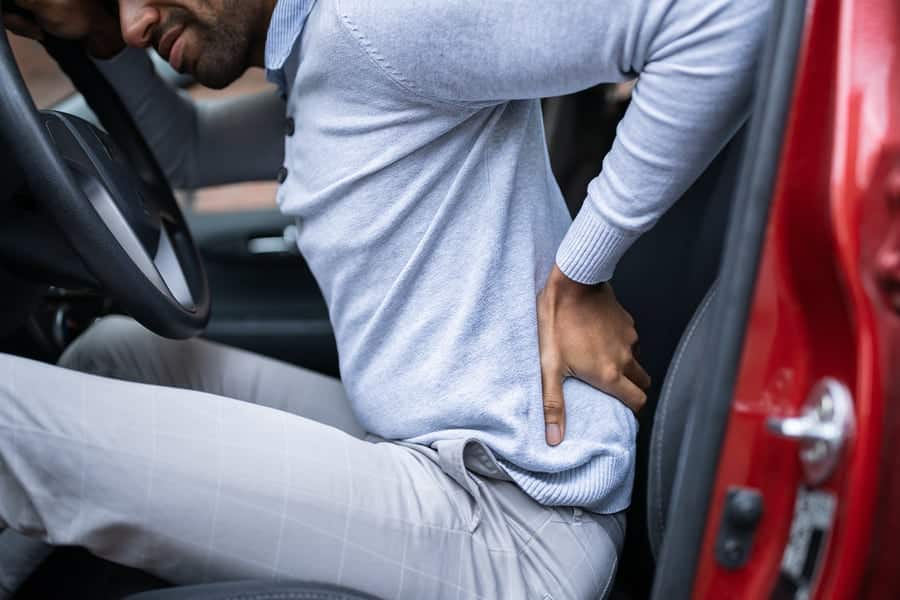
There is increasing evidence that sitting is not great for your health. Long periods behind the driver’s wheel can result in back pain. Getting in a car shouldn’t damage your health, and we’re not talking about avoiding accidents either. You’ll want to avoid damage to your body, which can play havoc with every aspect of your life. Ask any serious chronic back pain sufferer.
What can you do to ensure that you’re sitting comfortably, and you’re not suffering from those telling little back twinges behind the wheel, that could add up to some serious pain?
Table of contents:
- What are the causes of back pain?
- What does back pain feel like?
- How to find the ideal sitting position
- Avoiding back pain on the road
- And finally
What are the causes of back pain?
There are a number of factors that can increase your chances of experiencing back pain and injuring your body. These include:
Sitting for long periods of time – everyone feels stiffness after sitting in the same position for longer drives. If you’re already suffering from a back pain issue, then you’ll find that this exacerbates the problem.
Sitting in the wrong position – if your seat is not correctly in place for the size and shape of your body and limbs, then this is likely to put increased pressure on your spine and back.
Poor posture – even with the right seating position, it’s still possible to hurt yourself, if you don’t use the seat correctly. Being hunched over the wheel or slumping down in the seat can be every bit as dangerous as having the wrong seating position.
Sudden movements – you obviously need to keep your wits about you behind the wheel, however unexpected situations can suddenly arise on the road. Even if you’re shocked, try to move smoothly and avoid twisting your back, as this can create the acute injuries that lead to long term back pain.
Overreaching and stretching – want to reach that object in the glove compartment or the back seat? Make sure you take off the seat belt or better yet, get out of the car and walk round. Overstretching from the driver’s seat is the easiest way to damage your back.
What does back pain feel like?
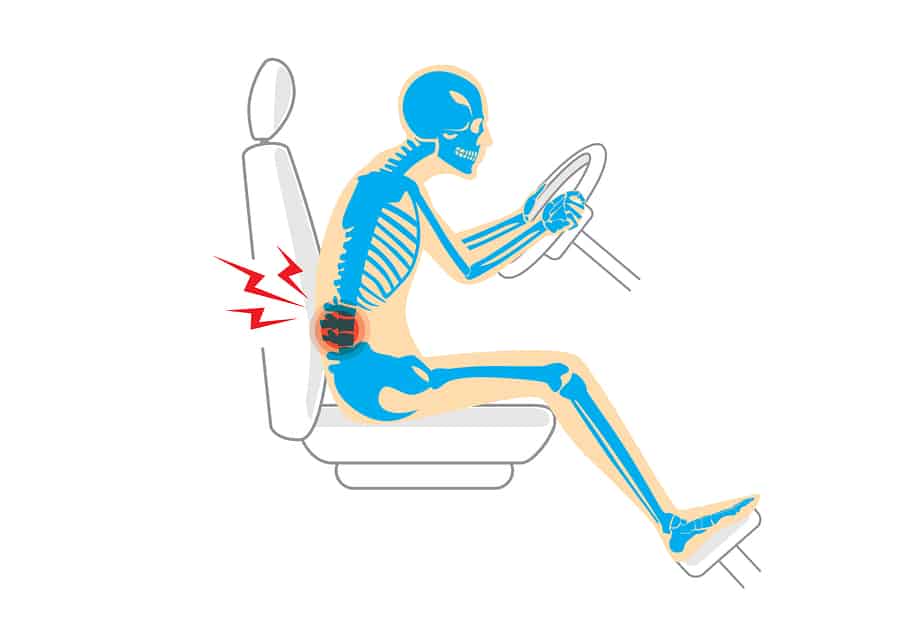
If you’re experiencing any of the following symptoms, this could indicate problems with your back:
Pins and needles – pressure on your spine can result in trapped nerves, giving you pins and needles, and numbness in the extremities of your body, such as your hands and lower legs.
Cramp – and your back locking up, indicates that the muscles in the back have been put under too much stress, producing the lactic acid associated with cramp.
Stiffness – tense, sore muscles will resist movement after they’ve been put under pressure from sitting in a bad position.
Dull pain and aches in the shoulders and neck – the back carries your head, which is a considerable weight. If your spine is not structured properly to support your head, this can manifest as pain in the shoulders and neck.
Chronic aches and pain – when you ignore other symptoms the pain in your back can become obstructive, and even require you to take time out from life.
Disc problems – such as a slipped disc or degeneration of the bones can occur when the back is put under severe, repeated stress from bad posture.
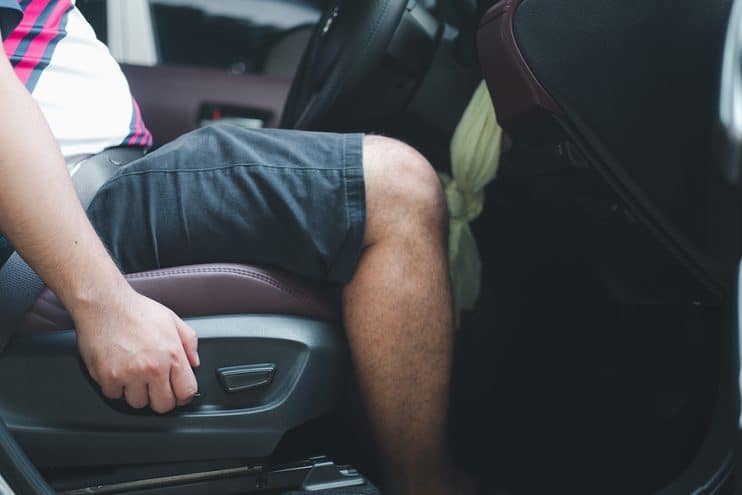
How to find the ideal sitting position
Use these steps to help you find the ideal driving position for your body type:
Position of your legs – relax into the seat, and place your back firmly against the rear with your shoulders at the top. Move the seat back and forward with the pedals depressed, until you find the right length, so your legs are slightly bent. Avoid having your knees locked into place, as this could be dangerous in the event of a crash, making them more likely to break or fracture.
Position of your rear – next push the adjustable seat cushion backwards and forward too, allowing yourself a gap of around 60 – 100mm between the edge of the seat and your knees. Then finally change the seat cushion angle.
Position of shoulders and back – now your legs are in place, it’s time to check the shoulders. Again, you’re looking to tilt the seat forward and back, so you can comfortably reach the steering wheel, without having to lock out your arms – for the same reason as you don’t want straight legs. Make sure your shoulders still sit comfortably in place, when you turn the steering wheel.
Adjust the seat height – to give yourself a full, unobstructed view of the road and other vehicles, put your seat as high as it will go, whilst still retaining enough headroom to safely move your head around, and keeping your legs and rear in the selected position.
Get your back comfortable – if you have lumbar controls, use them to make the seat align with the natural shape of your back. You’re looking for the closest fit possible, without being pushed forwards. If not, then you could purchase bolster cushions to support your back, as an alternative.
Then it’s a quick adjustment of the headrest, to ensure your neck is properly supported. You’ll want the top of the headrest to match with the top of your head.
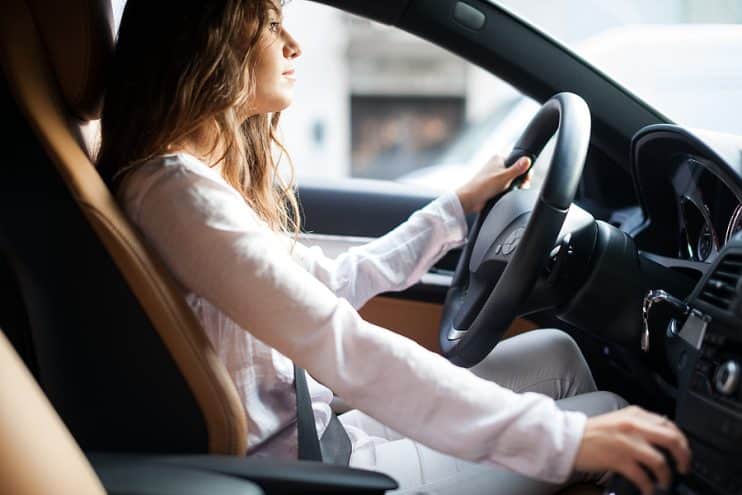
Avoiding back pain on the road
Prevention is better than cure as the famous saying goes. Stop back pain from ever becoming an issue, by considering some of the following factors:
What makes a good seat – much like choosing an office chair, the emphasis here is on support over comfort. You may think that a softer, spring loaded seat feels great, but one made out of firmer materials will win the day, and give you the support you need. If you’re constantly behind the wheel, you can even purchase a custom made seat shaped to your individual spine.
Most importantly, it’s vital to check that a seat has all the necessary controls – ranging from the lumbar controls through to much needed seat tilt, allowing you to find the positions we discussed earlier in the article.
Have a drive in the seat – you can look at a seat all you want, but there’s no beating getting into a car and finding out how that seat feels. Any car centre will allow you to take a car for a test drive – so make good use of the session, and notice how you feel when you get out of the vehicle. Second hand sellers should be the same, and you should be naturally wary of anyone who won’t let you take the car out on the road.
Sitting in the seat will give you a good idea of the proportions, and if a car is a good fit for your body size. However, you only really get an appreciation for how your body twists and turns in a seat when you’re out on the road, looking into the blind spot, checking mirrors, reaching for the gearstick – and so on. It’s the comfort and support for movement that makes the difference.
Take a break – for your own sake – even if everyone in the car wants to get somewhere in a hurry, remember that once your back is compromised, then you could have problems for the rest of your life. Take that break, and stretch your legs and twist and turn your upper body to realign and reset your back muscles. Driving and sitting will put pressure on your spine, even with the best seat and posture, and regular stretching and little walks will give it a chance to get some respite.
And if you can’t take a break then try doing some simple exercises in the front seat like pushing on the wheel with your arms or some shoulder shrugs to help keep your back loose.
And finally
There’s every reason to protect your back when driving – especially if getting behind the wheel is a big part of your job. Take care of yourself, and if you have pain in your back, take the time to see a specialist, and check that it’s nothing serious.


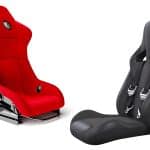
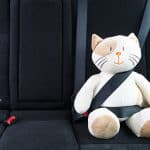

.png)